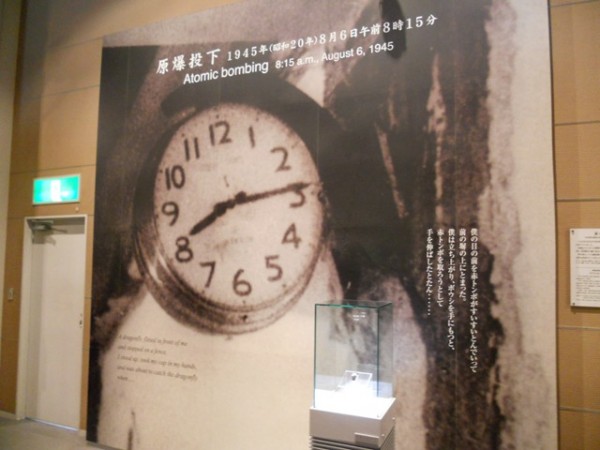
8.15am on August 6th, 1945 - the moment time stopped in Hiroshima
Growing up in the latter years of the Cold War the subjects of nuclear wars, mushroom clouds and Armageddon were never far away. We had Reagan and Thatcher talking tough to the revolving procession of aged Soviet leaders while the movies of the day depicted scenes of nuclear wars that caused genuine panic in many quarters when they were released.
All these nightmare scenarios would have been based on pure hypothesis and speculation had it not been for two very real atomic attacks on Hiroshima and Nagasaki. The names of these two faraway cities stayed in my mind since childhood. I found it hard to believe that places that had suffered such absolute devastation could have risen from the rubble to become thriving major cities once again. Once we had decided to visit Japan these were two cities I had to visit.
Hiroshima Peace Memorial Museum
The first stop for visitors to Hiroshima is usually the Peace Memorial Museum. The museum is very popular with Japanese school groups and as a natural consequence is not a place for peaceful reflection. That said, once you start reading about the horrors that are described so vividly and personally the background noise soon becomes forgotten.
Entrance is a nominal 50 yen with a 250 yen audio guide option available when you buy your entrance ticket. Do take the audio guide; it provides plenty of additional information, even if the very intimate accounts of survivors make what is already a difficult experience even tougher.
The museum occupies several large rooms and takes a couple of hours to explore at a steady pace. The main hall on the ground floor tells the story of the wider Japanese war from 1931 to 1945. It features large scale models of the city of Hiroshima before and immediately after the bomb was dropped on August 6th 1945. One section describes the American development of the bomb and tells the story from the viewpoint of the men aboard the Enola Gay, the plane that released its murderous cargo over the city.
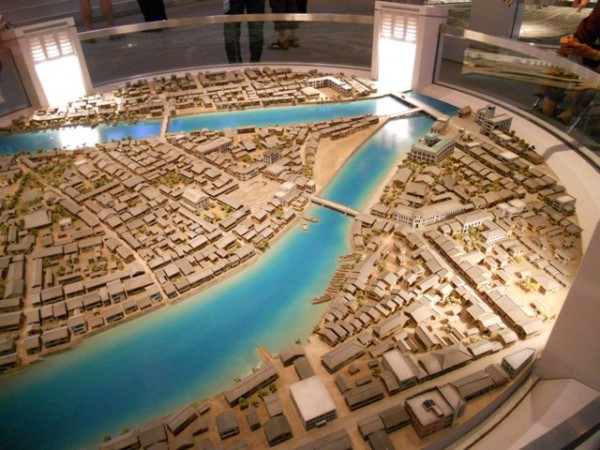
Model of Hiroshima in 1945 before the bombing
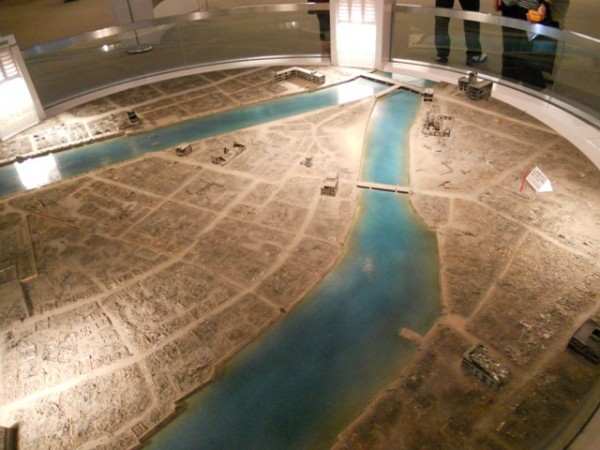
Hiroshima in 1945 in the aftermath of the bombing
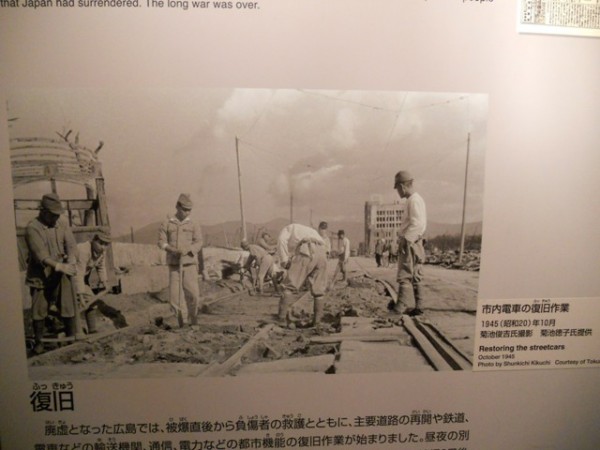
Workers rebuild the tram lines immediately - transport was restored within 3 days of the bombing
The upper floor looks objectively at the global nuclear arms race before directing visitors to what is surely the hardest part of the whole museum to witness: the personal accounts of the parents of children or of the children themselves who were victims, either killed as a result of the immediate fireball and blast or later by radiation. Artifacts such as charred lunch boxes and burned clothing hammer home the completely indiscriminate nature of weapons of mass destruction.
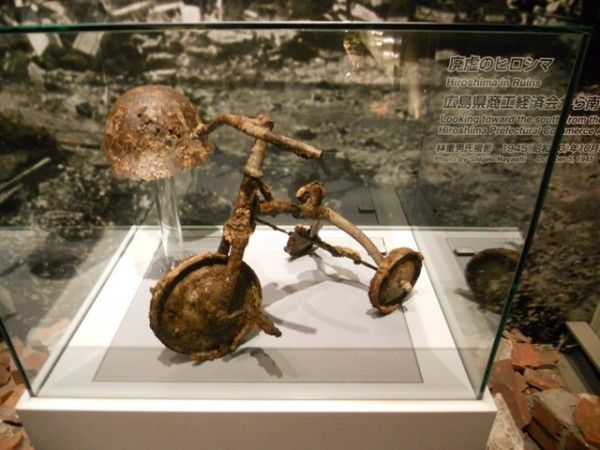
Children's toys are accompanied by some of the most tragic testimonies
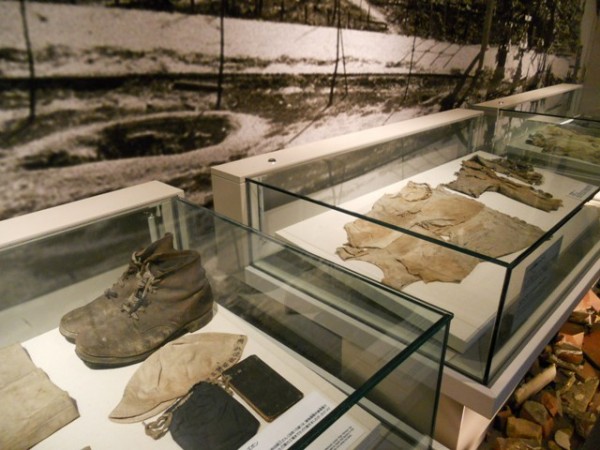
Each of these pieces of clothing reveals another heart-breaking story
Hibakusha – the atomic bomb survivors
Of particular interest is the information about hibakusha, the survivors of the atomic bombings. They were offered government medical support although many have suffered discrimination in Japanese society in the subsequent years, with some people fearing that they may be contagious or carry some sort of misfortune with them. Even the children of hibakusha have suffered this prejudice, finding it more difficult than others to get work.
While Japanese victims could access state support for their medical needs, the same help was not available for the many thousands of Koreans who were conscripted as forced labourers and who were affected by the bomb. Their fight has been long and painful and many still wait for recognition of the suffering they endured.
The museum does try to address the issue of the Korean conscripts but I found the mentions of empathy with the Koreans felt somewhat forced and seemed to be more of a nod to political correctness. For a far more powerful and soul-searching account of the treatment of foreigners during the war I would recommend a visit to the excellent Museum of World Peace in Kyoto.
Outside the Museum
The Peace Memorial Park outside the museum is dotted with statues and sculptures presented as gifts from world leaders to the city of Hiroshima. It provides a leafy area away from the crowds to contemplate the sounds and images of the museum and remember the horrors inflicted on this city.
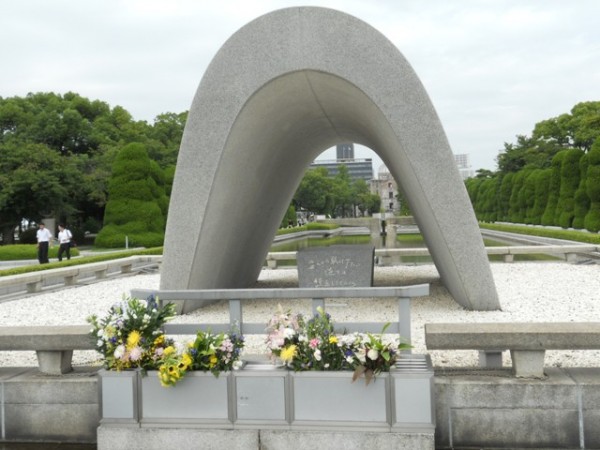
Peace Memorial Park
The actual hypocentre, the spot exactly below where the bomb detonated at 8.15 that morning, is marked by an easily missed memorial on an inconspicuous back street close to the park.
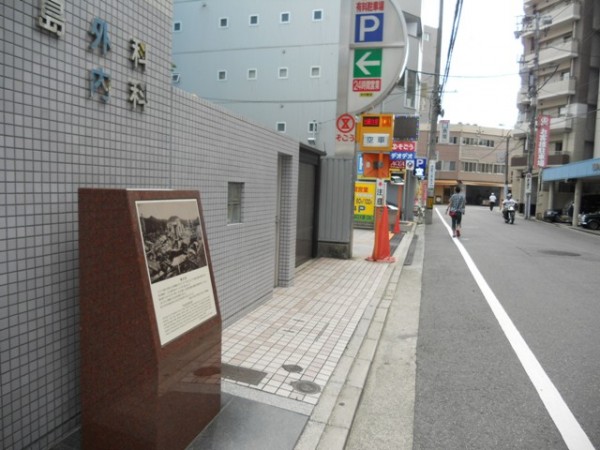
The hypocentre - the bomb exploded exactly over this spot
A-Bomb Dome
Perhaps the most recognisable symbol of Hiroshima is the A-bomb dome, previously housing the Hiroshima Prefecture Industrial Promotion Hall. It is barely 100 metres from the hypocentre of the atomic blast yet it remained one of the few buildings still standing, albeit badly damaged.
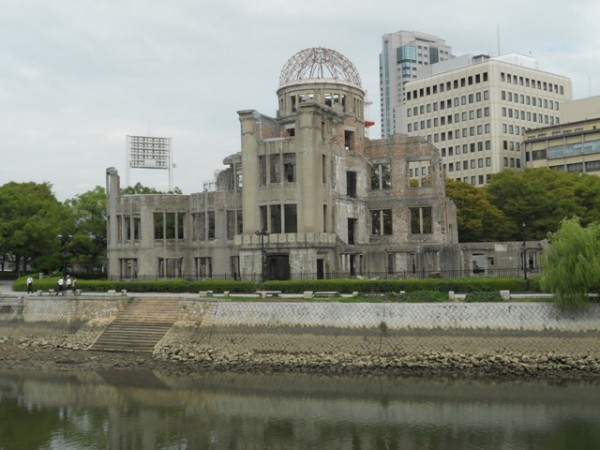
A-Bomb Dome
The site is illuminated at night and the nearby riverbank a popular area for families and groups of friends to bring their barbecues along with saki and music.
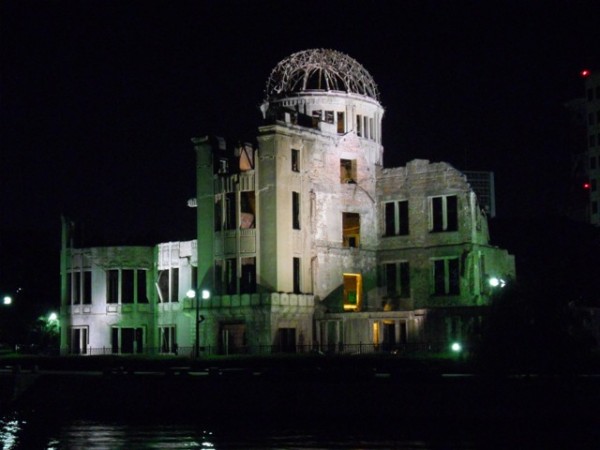
A-bomb dome in Hiroshima at night
We sat on the wall across from the A-bomb dome and watched and listened as a group of twentysomethings partied away under the exact spot where, a little over 66 years before, the first nuclear bomb in history had been deliberately used to wipe out an entire city. As I watched them enjoy the balmy summer evening, seemingly without a care in the world, I was reminded of the men who rebuilt the tracks and had the trams running 72 hours after the bomb exploded. Whatever we might sometimes think, humans really are a resilient species.





I visited this museum and found the whole experience very powerful and moving. I missed the hypocentre memorial though, so thanks for pointing this out and showing what I missed.
Thanks Ted – it’s one of those places with a dark past that it now an essential part of a visit to that country. If only people would learn from the lessons on display here…